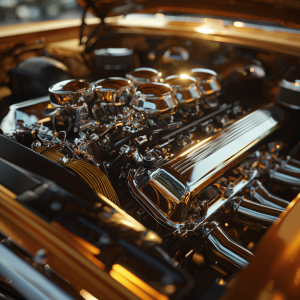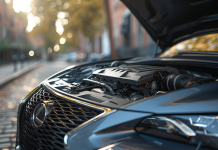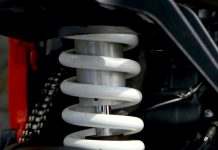The Key to Enhanced Safety and Performance
Regular vehicle inspections are essential for maintaining your car’s prime condition and ensuring maximum safety. It goes beyond merely complying with safety standards; it’s about enhancing your car’s overall performance and averting expensive future repairs.
A comprehensive check-up should cover all crucial aspects of your vehicle, including tyres, lights, brakes, and belts, to identify potential issues before they escalate into significant problems. This proactive approach secures your safety and boosts the car’s efficiency and longevity.
1. Fluid Management
The lifeblood of any vehicle is its fluids, which are crucial not only for maintaining optimal levels but also for understanding the quality and condition of these essential components. Key fluids include engine oil, coolant, brake fluid, power steering fluid, and screenwash.
Engine oil plays a vital role in lubricating and cooling engine parts, with regular changes crucial for prolonging engine life and efficiency. Coolant regulates engine temperature, preventing overheating and freezing, while brake fluid, which absorbs moisture, must be replaced regularly to maintain brake effectiveness. Power steering fluid eases steering effort, and screenwash ensures clear visibility.
Proper management of these fluids enhances vehicle performance and safety, making regular checks and replacements as per manufacturer guidelines imperative.
2. Cleaning Regimen
A regular cleaning regimen is crucial not just for aesthetic purposes but also for preserving the functionality and longevity of your vehicle. Cleaning involves both the interior and exterior aspects of your car.
Starting with the exterior, regular washing can prevent the buildup of dirt and chemicals that can lead to rust, particularly in areas where roads are salted during winter. Applying a coat of wax after washing enhances the shine and provides a protective layer against environmental elements.
Interior cleaning is just as important. Dust and dirt accumulation can affect the functioning of various components like the air conditioner and heating systems. Vacuuming the interiors, including seats and carpets, and wiping down surfaces can prevent premature wear and tear. Moreover, maintaining a clean interior provides passengers a more pleasant and hygienic environment.
3. Weight Management
An often overlooked aspect of car maintenance is managing the weight of your vehicle. Excess weight not only impacts fuel efficiency but also adds unnecessary strain to the vehicle’s suspension, brakes, and drivetrain. By removing non-essential items from the trunk and cabin, you can significantly improve your car’s mileage and reduce the wear on its critical components.
For instance, carrying extra weight equivalent to 100 kilograms can reduce your car’s fuel efficiency by approximately 1% to 2%. While this might seem minor, over time and across many miles, it adds up to a significant amount of wasted fuel and increased costs. Moreover, the additional strain can accelerate the wear of tyres and brakes, leading to more frequent replacements and repairs.
4. Spark Plug Maintenance
Spark plugs are essential for the smooth operation of your car’s engine. They provide the necessary spark to ignite the air/fuel mixture within the cylinders. Over time, spark plugs can become fouled with deposits or wear out, leading to misfires, reduced fuel efficiency, and increased emissions. Regular checks and timely replacement of spark plugs can prevent these issues and help maintain optimal engine performance and fuel efficiency.
For many vehicles, checking spark plugs should be part of your regular maintenance schedule, typically every 30,000 to 50,000 miles, depending on the type and model of the car. Replacing worn or dirty spark plugs can be straightforward for those familiar with essential car maintenance. It involves only a few tools and careful steps to ensure they are installed correctly.
5. Listening to Noises
One of the most proactive steps to maintain our cars is to be attentive to any unusual sounds. Sounds can be early indicators of potential issues that may require immediate attention whether it’s a whining sound from under the hood, a thumping noise from the tyres, or a grinding sound when braking, each noise can specify different potential problems.
For example, a squealing or whining sound when accelerating could indicate a problem with the belt, such as improper tension or alignment. On the other hand, a thumping sound often points to issues with the tyres, like uneven wear or misalignment. Grinding sounds during braking are typically related to worn brake pads or rotors. Addressing these sounds promptly can often prevent more severe problems and costly repairs.
6. Battery Care
The battery is the heart of your vehicle’s electrical system, and proper care is crucial, especially during the colder months when battery performance can significantly decline. Regular checks should include inspecting the battery for any signs of corrosion, ensuring the connections are clean and tight, and testing the battery’s charge level.
Replacing the battery before failure can prevent you from being stranded with a non-starting vehicle. Depending on usage and environmental conditions, it’s recommended to consider a battery replacement every three to five years. Proper battery maintenance ensures reliability and enhances the overall electrical system’s efficiency.
7. Lighting Checks
Regular testing of all vehicle lights is not just a safety measure—it’s a legal requirement. Effective lighting on a car extends beyond just ensuring you can see the road ahead; it also involves making sure that other drivers can see you, particularly in poor visibility conditions. This includes headlights, tail lights, brake lights, indicator lights, and reverse lights. Each of these plays a crucial role in different driving scenarios and needs to be fully operational to maintain safety.
For instance, headlights not only help illuminate the road during night driving but are also essential during adverse weather conditions like fog, rain, or snow. Brake lights signal to drivers behind you that you are slowing down or stopping, helping to prevent rear-end collisions. Indicator lights are critical for safe lane changes and turns. Regular checks can quickly reveal problems such as blown bulbs or electrical issues, which can be promptly fixed to ensure continuous safety and compliance with road regulations.
8. Tyre Oversight
Tyre maintenance is critical for safe driving. Regular assessments should include checking tyre pressure and tread depth. Correct tyre pressure ensures optimal contact with the road, improving traction and handling while reducing tyre wear and increasing fuel efficiency. Tread depth is equally important, as it provides the necessary grip, particularly in wet conditions, helping to prevent skidding and hydroplaning.
Drivers should replace their tyres well before they reach the legal wear limit of 1.6mm in the UK. For optimal safety, especially in wet conditions, consider replacing them when tread depth approaches 3mm. Monitoring tyre condition not only contributes to safer driving but also protects other vehicle components, such as suspension and alignment, from undue stress and wear.
9. Tool Familiarity
Having a basic understanding of tools and how to use them can significantly empower car owners to handle minor maintenance tasks themselves. Basic tools every car owner should have include wrenches, screwdrivers, and jacks. These tools allow you to perform simple tasks such as changing tyres, tightening loose components, and replacing basic parts like air filters and batteries.
Familiarity with these tools saves money on minor repairs and enhances your understanding of how your vehicle works. This knowledge is invaluable when troubleshooting issues, allowing for quicker, more informed decisions about whether a problem can be fixed at home or if professional service is needed.
10. Visibility Assurance
Maintaining clear visibility through your windshield is crucial for safe driving. This means regularly replacing worn or ineffective wiper blades, which are crucial during rain and snow. Wiper blades should be checked every six months and replaced at least once a year or more frequently if signs of wear, like streaking or skipping, appear.
Quality screenwash that can handle temperature variations effectively prevents the washer fluid from freezing in winter and helps remove dirt and insect marks in the summer. Keeping the windshield clean and clear enhances your ability to see the road and reduces eye strain during long drives.
11. Service Schedules
Adhering to the manufacturer-recommended service schedule is essential for comprehensive vehicle care. These schedules are designed based on extensive testing and research to determine the optimal intervals for servicing different components of your vehicle. This includes regular oil changes, filter replacements, and detailed system inspections. Regular service checks can identify potential issues before they become major problems, thereby saving money and extending the car’s lifespan.
Wrapping Up
In conclusion, regular vehicle inspections are not just a regulatory requirement but a critical practice for any car owner aiming to ensure safety and enhance performance. By prioritising thorough check-ups, you address minor issues before they become costly repairs, thus preserving your vehicle’s optimal condition.
This diligence contributes to improved road safety and overall vehicle performance. Remember, investing a little time and effort in regular inspections can save you from significant expenses and inconveniences in the future. Drive safely, knowing your car is in its best possible shape.










































